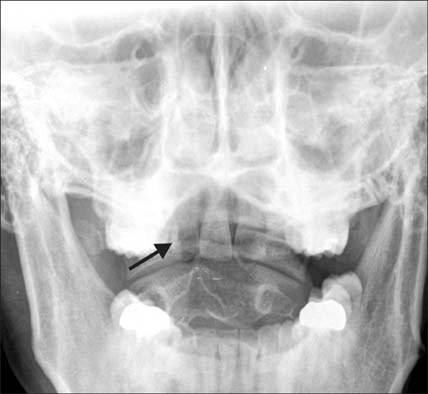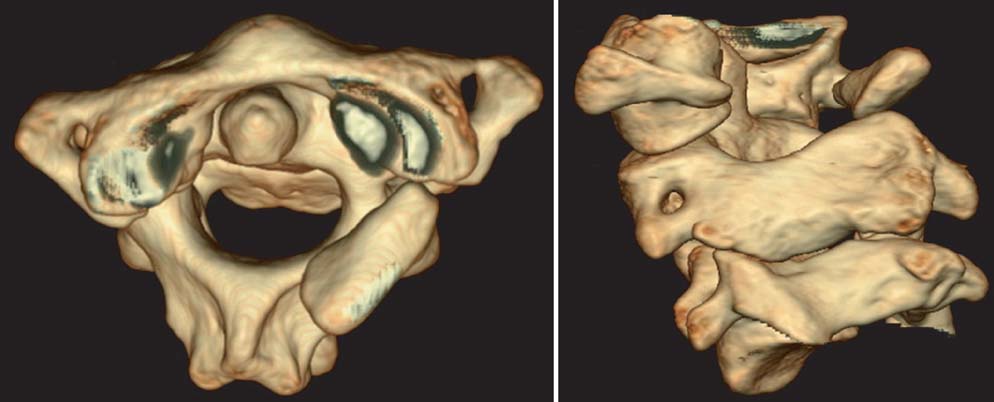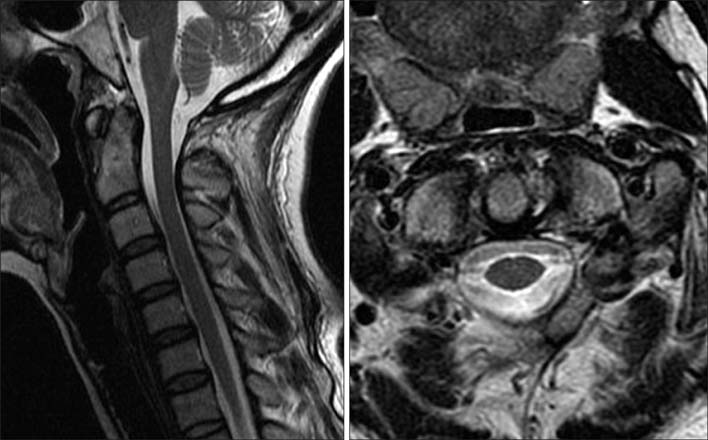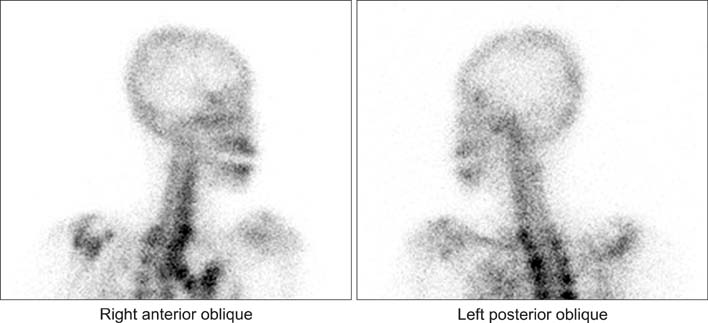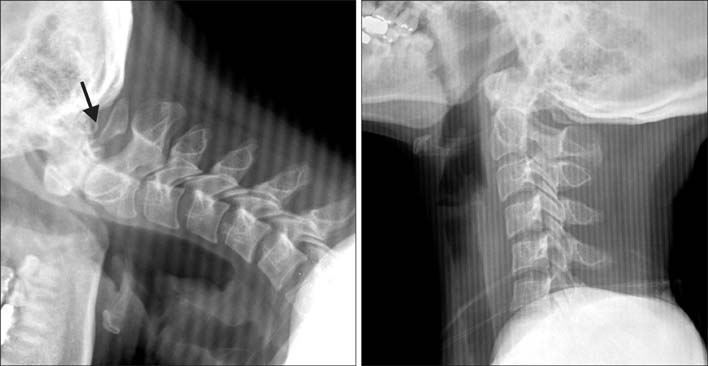Clin Orthop Surg.
2014 Mar;6(1):96-100. 10.4055/cios.2014.6.1.96.
Congenital Anomaly of the Atlas Misdiagnosed as Posterior Arch Fracture of the Atlas and Atlantoaxial Subluxation
- Affiliations
-
- 1Department of Orthopedic Surgery, National Health Insurance Cooperation Ilsan Hospital, Goyang, Korea. mini3001@naver.com
- KMID: 1737637
- DOI: http://doi.org/10.4055/cios.2014.6.1.96
Abstract
- Partial or complete absence of the posterior arch of the atlas is a well-documented anomaly but a relatively rare condition. This condition is usually asymptomatic so most are diagnosed incidentally. There have been a few documented cases of congenital defects of the posterior arch of the atlas combined with atlantoaxial subluxation. We report a very rare case of congenital anomaly of the atlas combined with atlantoaxial subluxation, that can be misdiagnosed as posterior arch fracture.
MeSH Terms
Figure
Cited by 1 articles
-
Radiologic evaluation of congenital anomalies of anterior and posterior arch of atlas in Omani subjects
Ghaliya Al Hinai, Mai Al Shandoodi, Srinivasa Rao Sirasanagandla, Salwa Al Sarhani, Humoud Al Dhuhli, Sanjay Jaju, Mohamed Al Mushaiqri
Anat Cell Biol. 2021;54(4):436-440. doi: 10.5115/acb.21.101.
Reference
-
1. Geipel P. Zur kenntnis der Spina bifida des Atlas. Forstschr Rontgenstr. 1930; 42:583–589.2. Logan WW, Stuard ID. Absent posterior arch of the atlas. Am J Roentgenol Radium Ther Nucl Med. 1973; 118(2):431–434.3. Connor SE, Chandler C, Robinson S, Jarosz JM. Congenital midline cleft of the posterior arch of atlas: a rare cause of symptomatic cervical canal stenosis. Eur Radiol. 2001; 11(9):1766–1769.4. Currarino G, Rollins N, Diehl JT. Congenital defects of the posterior arch of the atlas: a report of seven cases including an affected mother and son. AJNR Am J Neuroradiol. 1994; 15(2):249–254.5. Phan N, Marras C, Midha R, Rowed D. Cervical myelopathy caused by hypoplasia of the atlas: two case reports and review of the literature. Neurosurgery. 1998; 43(3):629–633.6. Sagiuchi T, Tachibana S, Sato K, et al. Lhermitte sign during yawning associated with congenital partial aplasia of the posterior arch of the atlas. AJNR Am J Neuroradiol. 2006; 27(2):258–260.7. Klimo P Jr, Blumenthal DT, Couldwell WT. Congenital partial aplasia of the posterior arch of the atlas causing myelopathy: case report and review of the literature. Spine (Phila Pa 1976). 2003; 28(12):E224–E228.8. O'Sullivan AW, McManus F. Occult congenital anomaly of the atlas presenting in the setting of acute trauma. Emerg Med J. 2004; 21(5):639–640.9. Park SY, Kang DH, Lee CH, Hwang SH. Combined congenital anterior and posterior midline cleft of the atlas associated with asymptomatic lateral atlantoaxial subluxation. J Korean Neurosurg Soc. 2006; 40(1):44–46.10. Schulze PJ, Buurman R. Absence of the posterior arch of the atlas. AJR Am J Roentgenol. 1980; 134(1):178–180.
- Full Text Links
- Actions
-
Cited
- CITED
-
- Close
- Share
- Similar articles
-
- Combined Congenital Anterior and Posterior Midline Cleft of the Atlas Associated with Asymptomatic Lateral Atlantoaxial Subluxation
- Congenital Hypoplasia of the Posterior Arch of the Atlas Associated with a Fracture of the Odontoid Process: A Case Report
- Anatomical Variant of Atlas : Arcuate Foramen, Occpitalization of Atlas, and Defect of Posterior Arch of Atlas
- Revision of Atlantoaxial Fusion using Segmental Screw Fixation: Experience in Bilateral Posterior Arch Fracture of the Atlas Complicating Atlantoaxial Halifax Clamp Fixation: A Case Report
- Stress Fracture of the Anterior Atlas Arch Following C1 Posterior Arch Resection for Cervical Myelopathy with Retro-Odontoid Pseudotumor


